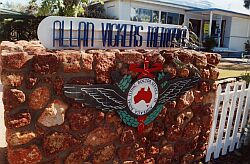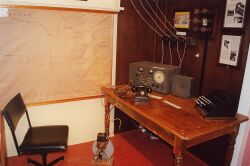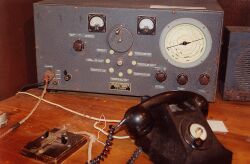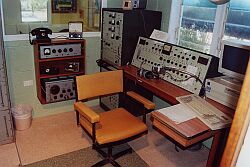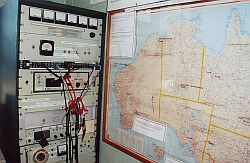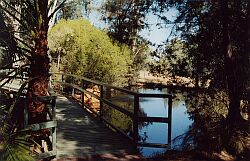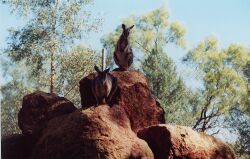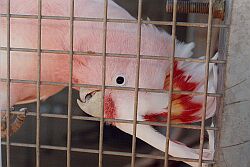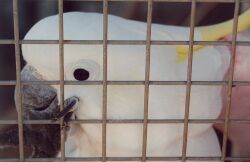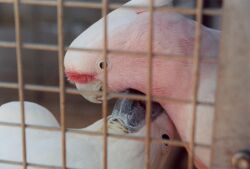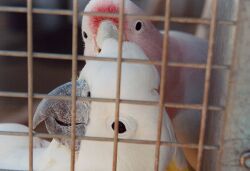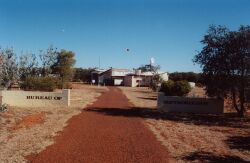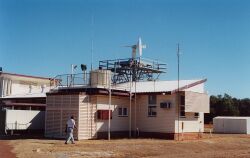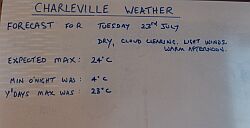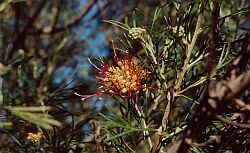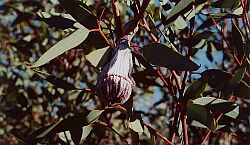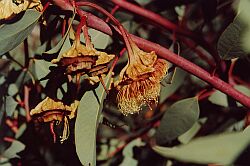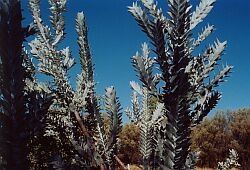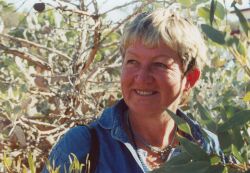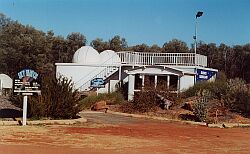CHARLEVILLE
Day 4
Tuesday 23rd July 2002
Eventhough the following morning was cold, it was far warmer than our last morning at Mitchell. We attempted to make breakfast and boil the billy with our new gas camp stove but apparently due to the very cold mornings, the jets froze and wouldn't let gas through. I even changed jets with the spares but still no luck. So much for the new stove. Luckily Ray's stove worked well and it was used to warm us up with a cuppa. Judy and Coral did the washing while I took some video shots of our surroundings. Judy notified me that the washing machine seemed very strange as the clothes seemed to be coming out worse than when they went into the machine. As my recent past life was as a White Appliance Repair electrician, I had a look. I found a faulty timer on the machine that was racing along after it filled and not allowing the machine to "wash" the clothes. Either the owner didn't know there was a fault or he left it that way to speed up the number of times the "cycle" could be used, allowing more people to use the machine. Whatever, the girls were not impressed. Meanwhile, Ray pottered around his campsite fine tuning things. After reading the leaflet which gave details of the towns attractions, we decided to see The Royal Flying Doctor Service and the National Parks and Wildlife Service Visitor Centre in the morning and the Australian Bureau of Meteorology in the afternoon. That night we were going to see Sky Watch. I loved The Royal Flying Doctor Service as it involved my number one interest in life, radio communication. The old transmitters and associated equipment were fascinating. The video about the service as you enter the building was also very good. Judy was interested in the health side of things as she was a nurse in her working life. We had to take the dogs with us, so tied them to the vehicle while we went inside. We went back to the car and Judy decided to take the dogs for their "comfort stop" walk. While walking them she noticed Cicada shells on the surrounding trees. She removed a huge one and carefully placed it on the dash mat as our mascot. A sad story ensued many kilometres down the track. After taking so much care of it for so many kilometres, I jumped into the passenger side and sat my camera directly on top of it, totally destroying her prized possession. Guess who was very unpopular for a long time. The National Parks and Wildlife Service Visitor Centre was great too. All of us were interested in the Wallabies and the birds. Judy was especially taken by the cockatoos. She asked me to take some close-ups of them so she could see the fine detail. She intends doing pastel drawings of them. She does fantastic pastel drawings. As weather is another of my hobbies, I was really looking forward to the visit to the Australian Bureau of Meteorology at the Charleville Airport. A balloon is released at certain times to measure the status of the atmosphere at various levels. Tourists are able to view one of these releases at 3pm. We arrived early at the site. As I was going to take a video of the release of the balloon and some still shots around the site generally, I organised both cameras. I took some still shots of the unusual ( to me ) native plants growing in the landscaped gardens at the site. The film ran out just as the show was about to begin but no problem, I reloaded. To my annoyance the low battery indicator came on. Not having time to see why, I missed the still shots of the balloon filling and release and only have a video record of it. We were shown the filling of the balloon with Hydrogen, a potentially dangerous situation, handled very professionally by the very affable and knowledgeable worker / guide. He then showed us the workings of the inside of the site including the electronic apparatus and software used in tracking the balloons and receiving the data after they are released. All really interesting to me and I didn't really want to leave. It seemed the others were interested too as many questions were asked and answered. To add to our memories of the bureau, we were given terrific posters of cloud types etc. Something that was a surprise was the Australian Bureau of Meteorology calendar which has a picture of my sisters mother in law on it. She has collected weather details for the Australian Bureau of Meteorology for many years and her story was on one of the pages. As we left the Australian Bureau of Meteorology site we could see the "Sky Watch" building. I felt a sense of excitement as I looked at it as I knew that we had paid our fees and booked to see the show that night. The sky was very clear and crisp and I assumed we would see a very good view of the night sky. As the afternoon wore on, being winter, the air began to cool. We had our evening meal, dressed warmly and headed out to the "Sky Watch" site. It was a very dark night with no moon. We arrived and parked. Eventually everyone assembled was guided into the building. Maybe I had too great an expectation of what we were to see, prompted by the look of the building externally. What we walked into was a sort of movie theatre with what I regarded as a Star Trek atmosphere. I expected professional, academic people to show us areas of the night sky, viewed through telescopes and thrown up onto a large screen for the audience to marvel over. Not so. What we got was what I can only describe as a movie / video of a teenage, fantasy version of someone's idea of the universe, complete with the usual tripe electronic noises. I sat there thinking... "I hope this is not all there is!" Eventually the tripe finished and we were guided outside to a circular open area where small lights around knee level illuminated the way. Two telescopes with two young female attendants were situated in the centre of the area. The females occasionally tweaked the telescopes as a male spoke about Astrological not Astronomical highlights of the sky. The air was getting really cold as we sat on the low concrete walls or stood, freezing, listening to a lesson on how to understand distances measured in light years. Maybe the others needed the lesson but it was common sense to me. Way too long after we moved to the area he stopped his chatter and asked us to look at a pair of lights through the telescope, apparently to the naked eye, only one light. Each person filed up to one of the two telescopes and viewed this "marvel". Some people were complaining about being out in the cold and were told - "It's in the brochure that you need to wear warm clothing". We wore warm clothing but were expecting a show inside a building. Also we didn't get our information from "a brochure". We were advised of the existence of "Sky Watch" by reading a leaflet handed out at the caravan park. The owner happily made our bookings for us, so, we had no contact with the "Sky Watch" staff or their brochure. Therefore there was no mention of an outside show, requiring VERY warm clothes. I know the cold as I was brought up in Kingaroy which has Winter night temperatures down to minus 6 Celsius and dress accordingly. To stand listening to drivel for around 30 minutes, outside, on a Winter night in Charleville, which has a similar climate was not an easy thing to put up with, in clothes designed for inside a building on a cold night. More than one person mumbled to me about how cold they were and "how much longer is he going to go on!?" People were way too cold and started drifting off. We headed back to our cars and home to a warm bed. A very disappointing event in more ways than one. As you can gather from the above, I wouldn't recommend going to the show. If you are totally unfamiliar with the night sky and it's going to be a warm night, then go. Otherwise, give it a big miss. Click on the pictures for larger versions
|
